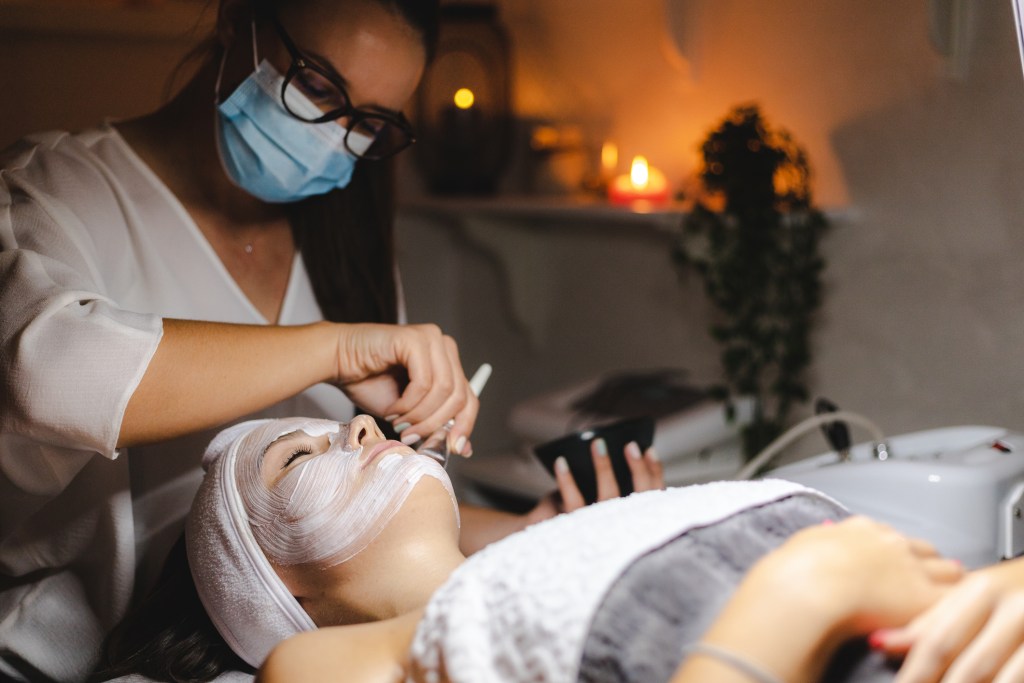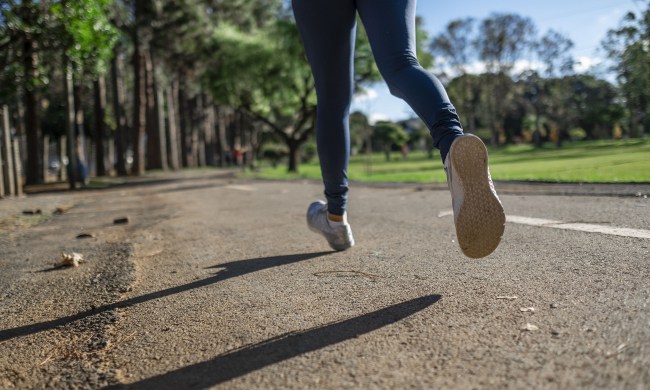Before the pandemic, a spa was the place to go and get away from it all, relax, and unwind while sinking into the therapeutic touch of a massage, facial, or other pampering treatment. Then, as with so many facets of modern life, COVID-19 changed everything.
For the spa industry, that meant adapting with little time to an unprecedented situation. Spas both small and large were forced to temporarily shutter their doors, and when they did reopen, many clients weren’t ready to return. Those who did book treatments were more concerned about health and safety protocols than what kind of tea to sip or aromatherapy to add on to a service. Offerings that were unheard of before 2020, such as touchless and above-the-mask treatments, suddenly were in high demand. And, then there was the implementation of cleaning and other safety protocols — how much is enough?
Thankfully, as vaccines have become widespread and COVID-19 cases drop, the spa industry is on its feet once again and even seeing a renewed interest in health and wellness. Yet, much of what the pandemic brought to the spa industry is here to stay. Here’s how what’s happened in the past 18 months is shaping spas into the future.
Overcoming industry-wide challenges
In 2019, 192 million people visited spas in the U.S. In 2020, that number dropped 35% to 124 million visitors. A March 2020 survey of spa professionals worldwide found that 80% had to temporarily close their spas as a result of the pandemic.
Staying afloat, along with product and supply issues were the biggest obstacles independent spa owner Sara Miller, of Sara Eve Esthetics, says she was up against. “It’s not unique, but I think we all faced the same challenges in the beauty industry during COVID,” says Miller.
Tammy Pahel, vice president of Spa and Wellness Operations at Carillon Miami Wellness Resort, says larger spas such as hers faced unprecedented staffing shortages upon reopening. “I’ve met with massage schools to recruit directly, and third-party staffing companies,” says Pahel.
Perhaps even more worrisome was the fact that along with staff, clients weren’t returning in droves, either. An April 2020 survey found that 47% of respondents said they were a little nervous about visiting a spa when the pandemic improved, while 25% said they were very nervous about visiting.
“Guests, residents, and locals that were 50 and over were concerned about returning to spa treatments provided by therapists, which is one of the reasons we launched our touchless wellness services last year,” says Pahel.
And therein lied the key — for spas to survive they had to get creative.
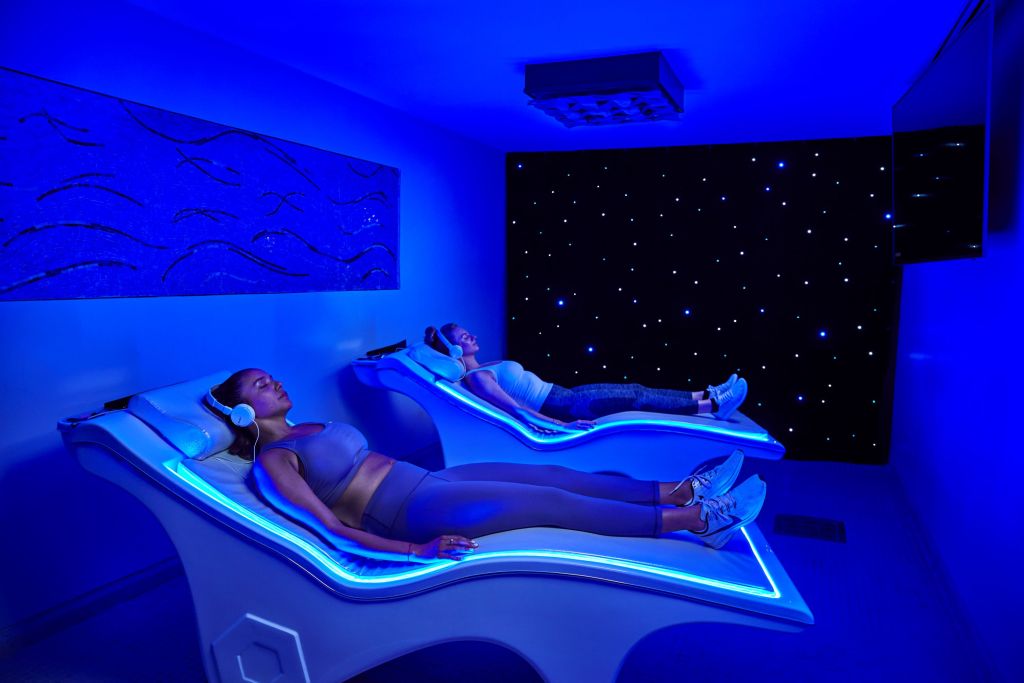
Healing without the touch
Prior to the pandemic, Pahel says the Carillon offered a small selection of contactless therapies. Since the start of the pandemic, the spa has added a whole new category called “Touchless Wellness.” Services include V.E.M.I. therapy, which uses “vibroacoustic, electromagnetic and infrared technology” combining sound resonance and full-body vibrations to detoxify and promote healthier cells, the Somadome meditation pod, Cyro facials using a cold therapy device, and the Spa Wave, combining music, gentle sound waves and vibration matched to the body’s energy chakras to promote relaxation and sleep.
The services have proven popular — Pahel says currently between 15% and 20% of spa revenue comes from touchless wellness services. “The price of touchless is inexpensive when comparing a massage, facial, or body treatment plus 20% gratuity or service charge. Touchless wellness experiences cost about 50% less and clients feel that they get more for their money,” she says.
For smaller spas such as Miller’s, which don’t typically have the revenue or space to invest in pricey machines, enforcing mask-wearing and other health and safety protocols were the keys to getting clients back in. “I space my clients by 30 minutes to ensure proper cleaning. My room is in a hair salon and stylists don’t work on Mondays, so that has become my most popular day to book now. It’s quiet and it’s just me in the salon so it makes my clients feel much more safe,” she says.
Enhanced safety and cleaning protocols also were a necessity for larger spas, says Pahel, adding that hotel staff also became Sharecare Health Security Verified, earning their badges by completing verification of 360 global health security standards.
These protocols are likely not going anywhere in the near future, according to Lisa Starr, a spa industry analyst, consultant, and educator, and founder of Wynne Business. “Although salons and spas have always been extremely hygienic workplaces, we can expect health and safety protocols to remain of high importance to consumers both now and in the post-COVID era,” says Starr. “Nowadays, the cleaning and sanitation that always went on behind the scenes are being brought to the forefront.”
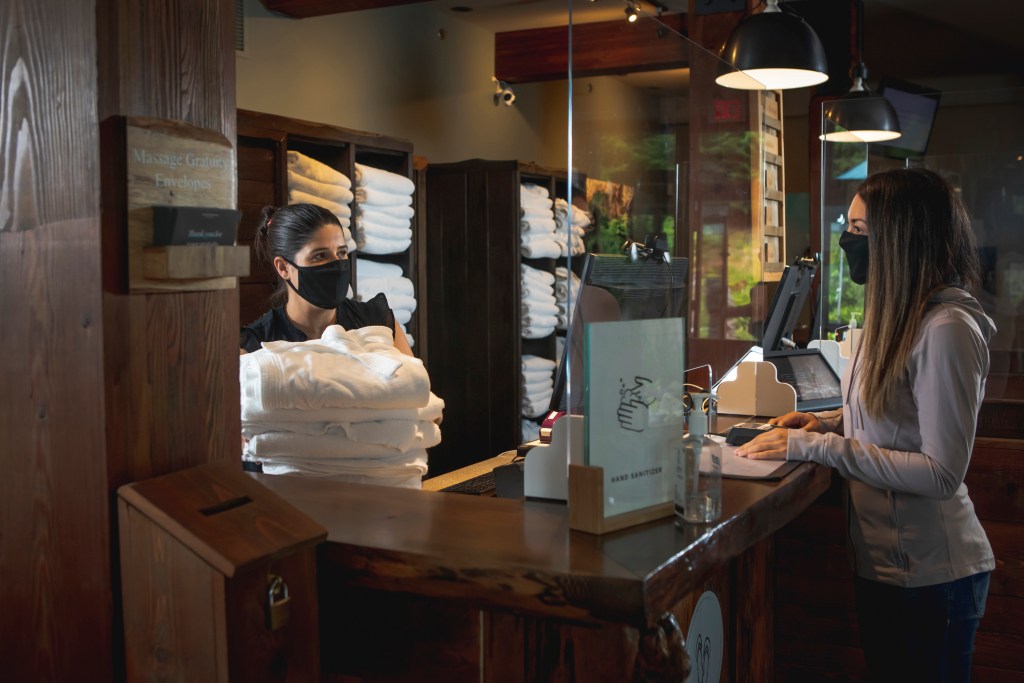
For spas, the future looks bright
It appears the rough run for the spa industry is over. The global spa market size was valued at $47.5 billion in 2020 and is expected to have a compound annual growth rate of 12.1% from 2021 to 2028. Ironically, what kept so many of us away from the spas is what’s driving us back — there’s nothing like an ongoing pandemic to make one prioritize self-care. According to the Mindbody 2021 Wellness Index, 78% of Americans surveyed said that wellness is now more important than ever.
That mindset represents a great opportunity for the rebounding spa industry, says Starr, who collaborates frequently with Mindbody. “We are seeing this increased focus on wellness play out in consumer behavior,” she says. “Forty percent of consumers say they’re getting more beauty services or treatments than before the pandemic, and about half of consumers say they plan on treating themselves with more ‘indulgent’ salon or spa services or treatments in the next six months.”
Miller says she’s seen this new focus reflected in her business, as clients are eager to try services that they’ve always been curious about. “Once the vaccine rolled out for everyone my business increased tenfold,” she says. “I think people have been saving more money during COVID and are putting themselves first like never before. Once they see their skin health improve and stress levels drop from spa and facial treatments, people are making skin care a part of their overall wellness routine.”
Starr says it’s not so much what’s on the spa menu, but the spa experience itself that people are seeking. “This has been the result of consumers realizing the positive impact that staying healthy can have on their lifestyle and that regular beauty and wellness treatments and experiences have a definite influence on physical and mental health, and well-being,” she says. “But primarily, humans have all realized the tremendous importance and impact of human touch and community, both of which can be satisfied by routine spa and wellness treatments.”
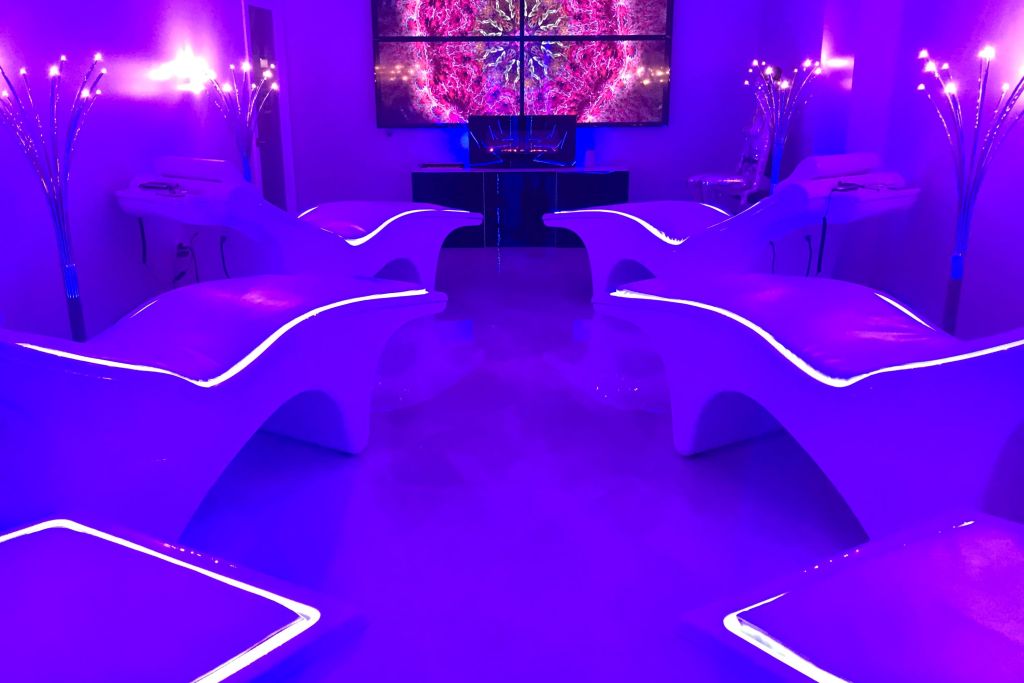
Coming soon to a spa near you…
In 2021, low-touch services, skincare (especially to combat “maskne”), and services to enhance mental wellness all were growing spa trends. What will spa clients be seeking in 2022? Likely a mixture of services, according to Starr.
“In the post-COVID world, consumers will crave ‘high-touch’ spa services more than ever. In fact, Mindbody’s Summer 2021 U.S. Consumer Survey revealed that 29% of women plan to have more high-touch services post-vaccination than they did prior to the pandemic,” she says. “However, the introduction of ‘low-touch’ services has provided an option that many people find to be both convenient and well-priced, and wellness-oriented options such as LED treatments, infrared sauna, halotherapy, and recovery services, including cryotherapy and percussive therapy, will continue to grow in popularity.”
Starr says that while recent Mindbody data shows that traditional treatments, especially maintenance services such as haircuts, waxing, and facials, will remain the most popular, more than half of spa clients report they are more open to trying new beauty services than they were prior to the pandemic.
“With this in mind, beauty businesses have an opportunity to expand to new offerings and perhaps attract a new client segment. Clients are also very interested in stress-relieving experiences, including breathwork, meditation and movement, and sound healing, among others,” she says.
With the Carillon already offering these types of services, Pahel says the spa has gone the next step and added a variety of expanded services including weight management, hormone and nutrient therapies, and acupuncture. Professional relationship and life coaching, and couples and individual therapy are also being offered, according to Pahel.
“In the early ‘90s, the International Spa Association paid Price Water Cooper to predict the future of the Wellness Spa Industry. PWC said, ‘The spa industry would be the hospital of the future,’” says Pahel. “The spa and wellness industry has been heading in that direction since 2008, which is also the same year I first added integrative medicine to my first wellness spa in South Carolina. Since then, my husband and I have built 13 wellness spas from the ground up and we have seen many shifts since 2000, and now we see that COVID wellness is the focus of everything right now.”
Finally, no matter the size of the spa, technology will play a role in its future. “The esthetics business is always forever changing with new technology, products, etc.,” says Miller. “Short term, I see more people actually staying with their skin care treatment plans now that they understand the benefits. Long term, I see more spas large and small moving parts of their businesses like retail sales and client consults to online.”
“Looking toward the future, I foresee more spas embracing technology for new treatments and benefits,” says Pahel. “Technology will continue to change the way clients and spa directors view wellness.”
BlissMark provides information regarding health, wellness, and beauty. The information within this article is not intended to be medical advice. Before starting any diet or exercise routine, consult your physician. If you don’t have a primary care physician, the United States Health & Human Services department has a free online tool that can help you locate a clinic in your area. We are not medical professionals, have not verified or vetted any programs, and in no way intend our content to be anything more than informative and inspiring.
